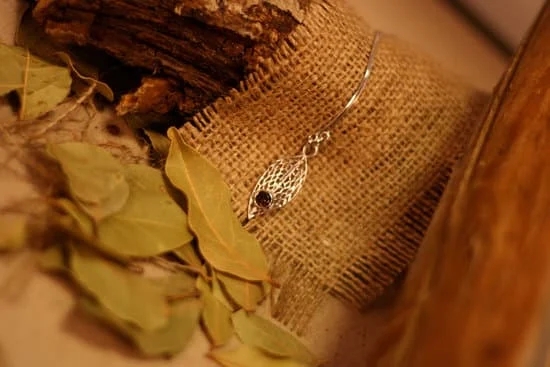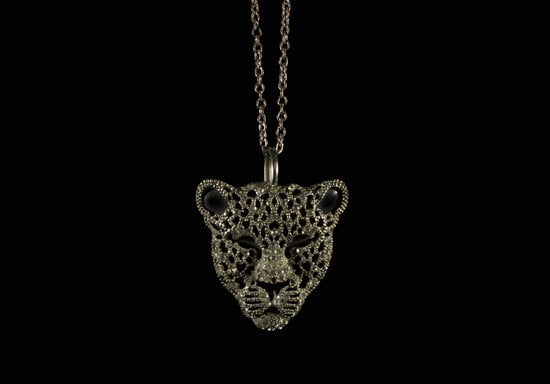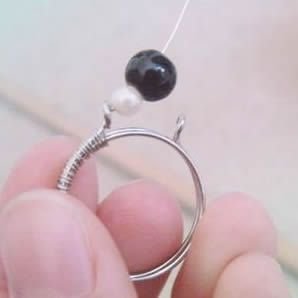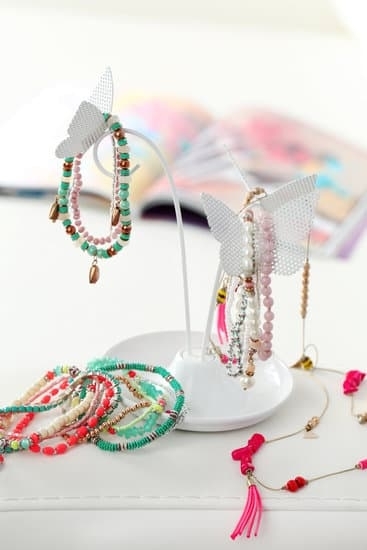Victorian vs Edwardian bead jewelry offers a fascinating glimpse into the opulent world of 19th and early 20th-century fashion. From intricate designs to exquisite craftsmanship, these jewelry pieces are a testament to the artistic sensibilities of their respective eras. Delving into the historical background of Victorian and Edwardian bead jewelry reveals a rich tapestry of cultural influences and design aesthetics that have captured the imagination of collectors and enthusiasts alike.
During the Victorian era, beadwork flourished as a popular form of adornment, reflecting the prevailing tastes and values of the time. In contrast, the Edwardian period saw a shift towards lighter, more delicate designs that were influenced by changes in fashion and society. Understanding the materials and techniques used in creating these masterpieces is essential to appreciating the artistry and skill that went into crafting each piece.
The symbolism and significance behind Victorian vs Edwardian bead jewelry add another layer of intrigue to these intricate pieces. From floral motifs to geometric patterns, each design tells a story and conveys meaning beyond mere ornamentation. By exploring the popular motifs and themes commonly found in these jewelry pieces, collectors can gain insight into the trends and preferences that shaped fashion during these distinct periods in history.
Historical Background
The Victorian era, spanning from 1837 to 1901, was a period marked by Queen Victoria’s reign over the British Empire. This era was characterized by a sense of opulence, elegance, and romanticism in fashion and jewelry. Victorian bead jewelry was intricately crafted using a variety of materials such as glass beads, seed pearls, gemstones, and metals like gold and silver.
These pieces often featured elaborate designs and motifs inspired by nature, symbolism, and sentimental themes. The craftsmanship of Victorian bead jewelry reflected the wealth and social status of the wearer, making it a symbol of prestige during that time.
On the other hand, the Edwardian era followed the Victorian period, from approximately 1901 to 1910 during the reign of King Edward VII. This era marked a shift towards lighter and more delicate designs in jewelry, including beadwork.
Edwardian bead jewelry incorporated influences from Art Nouveau and Art Deco movements, resulting in pieces that were more refined and ethereal compared to their Victorian counterparts. The use of filigree work, intricate patterns, and pastel-colored gemstones added a touch of femininity and grace to Edwardian bead jewelry.
Technological Advancements: Impact on Bead Jewelry Production
During the Victorian era, advancements in manufacturing techniques such as die-cutting machines made production more efficient for bead makers. This led to an increase in mass-produced beads that were affordable for a wider range of consumers.
In contrast, the Edwardian era saw further technological advancements with the introduction of electric-powered machinery that improved precision in bead cutting and polishing processes. These innovations allowed artisans to create intricate designs with smaller beads while maintaining high-quality standards in Edwardian bead jewelry production.
Symbolism in Victorian vs Edwardian Bead Jewelry
Symbolism played a significant role in both Victorian and Edwardian bead jewelry design. In Victorian beadwork, common motifs like flowers (especially roses), hearts, snakes (symbols of eternal love), and butterflies symbolized sentiments such as love, mourning, rebirth, and protection. On the other hand, Edwardian bead jewelry often featured motifs inspired by nature like garlands, bows, feathers, and ribbons symbolizing gracefulness, beauty, freedom,and delicateness.
Moreover: Both eras valued meaningful symbols within their intricate designs – making each piece not merely decorative but also imbued with personal or cultural significance.
Materials and Techniques
Victorian and Edwardian bead jewelry showcase intricate craftsmanship and attention to detail, making them highly coveted pieces for collectors and enthusiasts alike. The materials and techniques used in creating these ornate pieces play a crucial role in defining the distinct styles of each era.
In the Victorian era, bead jewelry was often crafted using a wide range of materials such as seed pearls, glass beads, coral, and jet. Seed pearls were particularly popular due to their delicate size and iridescent sheen, adding a sense of elegance to the jewelry pieces.
Glass beads came in an array of colors and shapes, allowing artisans to create intricate patterns and designs. Techniques such as wire wrapping, sewing beads onto fabric, and stringing beads together were commonly used to create elaborate necklaces, bracelets, and earrings.
On the other hand, Edwardian bead jewelry shifted towards lighter and more delicate designs compared to the heavier Victorian pieces. Materials like freshwater pearls, moonstones, opals, and mother-of-pearl were favored during this period. The use of platinum became more prevalent in Edwardian jewelry-making due to its strength and ability to hold intricate designs. Intricate filigree work and open-back settings were also distinctive characteristics of Edwardian bead jewelry, giving them a graceful and airy aesthetic.
Overall, the materials and techniques used in Victorian vs Edwardian bead jewelry reflect the evolving tastes and styles of their respective eras. While Victorian pieces are known for their boldness and richness in materials, Edwardian jewelry exudes a lighter and more ethereal quality through delicate designs and subtle embellishments. Collectors can appreciate the unique artistry behind each piece as they seek to preserve the legacy of both Victorian vs Edwardian bead jewelry in today’s fashion landscape.
- Seed pearls
- Glass beads
- Wire wrapping technique
- Freshwater pearls
- Moonstones
- Platinum
Design and Style Differences
Victorian bead jewelry and Edwardian bead jewelry, while both exquisite in their own right, exhibit distinct design and style differences that reflect the evolving fashion trends of their respective eras. The Victorian era, spanning from 1837 to 1901, was characterized by its romantic and sentimental aesthetic, often incorporating intricate details and symbolism into jewelry pieces.
On the other hand, the Edwardian era, which followed from 1901 to 1910, embraced a more delicate and ethereal style with an emphasis on lightness and femininity.
To highlight the design disparities between Victorian and Edwardian bead jewelry, it is essential to examine key aspects such as motifs, color palettes, and overall aesthetic. In Victorian bead jewelry, commonly used motifs included hearts, flowers, serpents, and bows symbolizing love, nature, eternity, and femininity respectively.
These motifs were intricately woven into elaborate designs using materials like seed pearls, paste stones, enamel work, and colorful glass beads. The color palette ranged from rich jewel tones to pastel shades reflective of the romanticism of the era.
In contrast, Edwardian bead jewelry adopted a lighter and airier approach with a preference for lacy filigree designs inspired by garlands of flowers or bows. The use of pearls became more prevalent during this period due to their association with purity and elegance.
Additionally, diamonds were also incorporated into designs to create a shimmering effect that complemented the understated elegance of Edwardian fashion. The color palette shifted towards pastel hues such as pale pink, lavender, and aquamarine to enhance the delicate nature of the jewelry pieces.
Symbolism and Significance
Victorian vs Edwardian bead jewelry holds a rich tapestry of symbolism and significance, reflecting the values, beliefs, and interests of the eras they were created in. In Victorian bead jewelry, symbolism played a crucial role, with each bead carefully chosen to convey messages of love, remembrance, or mourning.
For example, black beads were commonly used in mourning jewelry during the Victorian era to symbolize loss and grief. On the other hand, Edwardian bead jewelry embraced a more delicate and light-hearted approach to design, reflecting the optimism and elegance of the early 20th century.
The intricate beadwork found in both Victorian and Edwardian jewelry often carried deeper meanings beyond mere aesthetics. Flowers, for instance, were a prevalent motif in both eras’ bead jewelry. In Victorian times, specific flowers like forget-me-nots symbolized eternal love and fidelity.
Meanwhile, Edwardian floral beadwork captured the essence of nature’s beauty with motifs like roses symbolizing love and passion. Understanding these symbolic representations adds layers of appreciation for the craftsmanship and artistry behind each piece of Victorian vs Edwardian bead jewelry.
Furthermore, religious symbols also played a significant role in both Victorian and Edwardian bead jewelry. Crosses were commonly incorporated into designs as expressions of faith and devotion. In Victorian times, cross-shaped beads were often utilized in rosaries or as part of mourning jewelry to signify hope for salvation or eternity.
The transition into the Edwardian era saw a shift towards more intricate cross designs that reflected the era’s embrace of opulence and refinement in fashion trends. This integration of religious symbols not only added spiritual depth to Victorian vs Edwardian bead jewelry but also spoke to the wearer’s beliefs and values at that time.
| Symbolism | Victorian Bead Jewelry | Edwardian Bead Jewelry |
|---|---|---|
| Flowers | Symbolized eternal love. | Captured nature’s beauty with motifs like roses representing love. |
| Crosses | Incorporated as expressions of faith. | Shifted towards more intricate designs reflecting opulence. |
Popular Motifs
Victorian Bead Jewelry Motifs
Victorian bead jewelry is known for its intricate designs and detailed motifs that often reflected the sentiments and beliefs of the era. Popular motifs found in Victorian bead jewelry include floral patterns, such as roses, lilies, and forget-me-nots, symbolizing love, purity, and remembrance. Additionally, Victorian bead jewelry often featured symbolic motifs like hearts, snakes, anchors, and butterflies, each carrying its own meaning and significance.
Edwardian Bead Jewelry Themes
In contrast to the elaborate designs of Victorian bead jewelry, Edwardian bead jewelry embraced a shift towards lighter and more delicate aesthetics. Edwardian pieces often showcased romantic themes such as bows, ribbons, garlands, and lace-like patterns. The use of pearls and pastel-colored beads further emphasized the ethereal and feminine qualities of Edwardian jewelry. Moreover, nature-inspired motifs like feathers, insects, and bows were also popular during the Edwardian era.
Common Motifs in Both Eras
While Victorian and Edwardian bead jewelry have distinct design elements attributed to their respective eras, there are common motifs that can be found in both periods. For example, crescent moons were a popular motif in both Victorian mourning jewelry as well as Edwardian evening accessories.
Additionally, geometric patterns like stars and diamonds were prevalent in both Victorian parures and Edwardian sautoirs. These shared motifs showcase the evolution of design trends from one era to another while maintaining certain timeless elements in bead jewelry craftsmanship.
By examining these popular motifs in Victorian vs Edwardian bead jewelry, collectors gain insight into the rich symbolism embedded within each piece as well as an appreciation for the artistry of craftsmen from two distinct historical periods.
Collector’s Guide
Victorian vs Edwardian bead jewelry pieces are highly sought after by collectors for their historical significance and intricate craftsmanship. Identifying and authenticating these exquisite pieces requires a keen eye for detail and knowledge of the unique characteristics of each era’s designs. Here are some tips to help collectors determine the authenticity of Victorian vs Edwardian bead jewelry:
One key aspect to consider when authenticating Victorian vs Edwardian bead jewelry is the materials used. Victorian bead jewelry often featured intricate designs with small, delicate beads made from materials such as glass, seed pearls, and coral. On the other hand, Edwardian bead jewelry tended to be more light and delicate, with the use of filigree metalwork and enamel detailing. Examining the quality and craftsmanship of the materials can give clues to the era in which the piece was made.
Another important factor to look out for when identifying Victorian vs Edwardian bead jewelry is the design motifs. Victorian bead jewelry commonly featured nature-inspired motifs such as flowers, birds, and insects, while Edwardian designs were influenced by Art Nouveau styles characterized by flowing lines and feminine figures. By studying the design elements present in a piece of bead jewelry, collectors can gain insight into its era of origin.
Additionally, collectors should pay attention to any hallmarks or maker’s marks on Victorian vs Edwardian bead jewelry pieces. These marks can provide valuable information about the designer or manufacturer of the piece, helping to authenticate its provenance. Researching known makers from each era can also aid in verifying the authenticity of a piece of antique bead jewelry.
By combining knowledge of historical trends, materials, design characteristics, and maker’s marks, collectors can confidently identify and authenticate Victorian vs Edwardian bead jewelry pieces. These timeless treasures continue to captivate enthusiasts with their beauty and craftsmanship, making them valuable additions to any collection dedicated to antique jewelry.
Contemporary Influences
Victorian vs Edwardian bead jewelry has left a lasting impact on the world of fashion and design, with their intricate designs and timeless beauty continuing to inspire modern trends. The exquisite craftsmanship and attention to detail seen in both Victorian and Edwardian bead jewelry have set a high standard for jewelry makers today. Designers often look back at these historical eras for inspiration, incorporating elements of beadwork from the past into contemporary pieces.
One of the key ways in which Victorian vs Edwardian bead jewelry influences modern designs is through the use of vintage-inspired motifs and patterns. From delicate floral designs to geometric patterns, these historical styles are often reimagined in contemporary jewelry pieces. The use of beads in various shapes, sizes, and colors adds a unique texture and dimension to modern creations, drawing inspiration from the rich tradition of Victorian and Edwardian beadwork.
Furthermore, the popularity of antique Victorian vs Edwardian bead jewelry among collectors and fashion enthusiasts has led to a resurgence of interest in vintage-inspired designs. Many designers incorporate elements from these historical eras into their collections, creating a blend of old-world charm with a modern twist. The elegance and sophistication associated with Victorian vs Edwardian bead jewelry continue to captivate audiences today, making them a timeless source of inspiration for fashion trends across the globe.
| Victorian vs Edwardian Bead Jewelry Influence | Modern Fashion Trends |
|---|---|
| Vintage motifs reimagined | Floral designs, geometric patterns |
| Beads in various shapes, sizes, colors | Texture and dimension in contemporary pieces |
| Resurgence of interest in vintage-inspired designs | Blend of old-world charm with a modern twist |
Conclusion
As we conclude our exploration of Victorian vs. Edwardian bead jewelry, it is evident that these intricate pieces hold a timeless charm and legacy that continues to captivate collectors and enthusiasts alike. The rich historical background, unique materials, and techniques, as well as the distinctive designs and styles of both eras, contribute to the enduring appeal of Victorian vs. Edwardian bead jewelry.
One cannot overlook the symbolic significance behind the intricate beadwork found in these jewelry pieces. From romantic florals to meaningful motifs, Victorian vs. Edwardian bead jewelry encapsulate stories of love, loss, and societal values of their respective eras. This symbolism adds a layer of depth and intrigue to these exquisite creations.
For collectors looking to identify and authenticate Victorian vs. Edwardian bead jewelry pieces, understanding the popular motifs and themes commonly used in each era is essential. By recognizing key design elements specific to each period, collectors can appreciate the craftsmanship and artistry behind these stunning pieces even more.
Additionally, the influence of Victorian vs. Edwardian bead jewelry on contemporary designs in the fashion industry showcases how these historic styles continue to inspire modern trends, further solidifying their lasting legacy in the world of accessories.
Frequently Asked Questions
What Is the Difference Between Edwardian and Victorian Jewelry?
Edwardian jewelry is known for its delicate and lacy designs, featuring intricate metalwork and filigree. It also often incorporates pearls, diamonds, and colored gemstones in light, airy settings. On the other hand, Victorian jewelry tends to be more ornate and heavy, with bold designs inspired by nature, sentimental motifs, and the use of gemstones like amethysts, garnets, and turquoise.
How Can You Tell if Jewelry Is Edwardian?
To identify Edwardian jewelry, one can look for specific design elements such as garlands of flowers or lace-like patterns created through delicate metalwork. The use of platinum during the Edwardian era is also a key indicator, as it was commonly used due to its strength and ability to hold intricate details like filigree work.
How Can You Tell if Jewelry Is Victorian?
Victorian jewelry can be identified by its bold and elaborate designs inspired by nature such as flowers, leaves, animals, and insects. Other visual cues include the use of dark gemstones like onyx or garnet set in elaborate gold settings. Additionally, sentimental motifs like hearts or clasped hands are common in Victorian pieces.

Welcome to my jewelry blog! My name is Sarah and I am the owner of this blog.
I love making jewelry and sharing my creations with others.
So whether you’re someone who loves wearing jewelry yourself or simply enjoys learning about it, be sure to check out my blog for insightful posts on everything related to this exciting topic!





